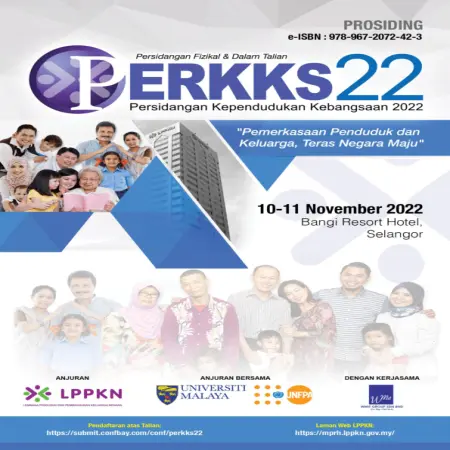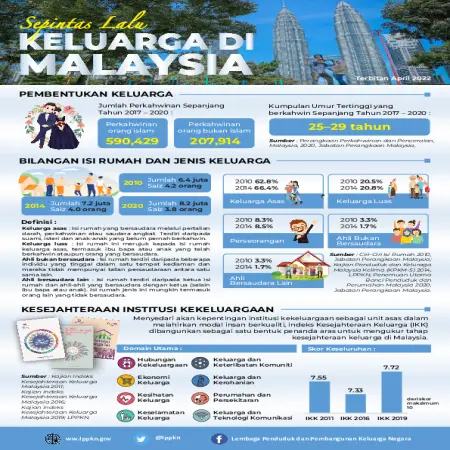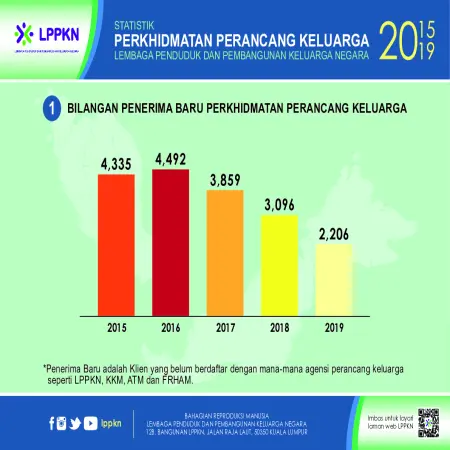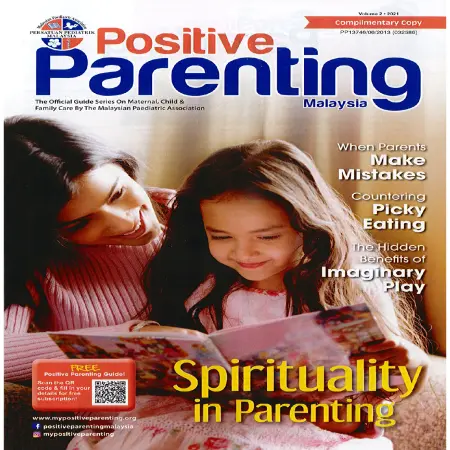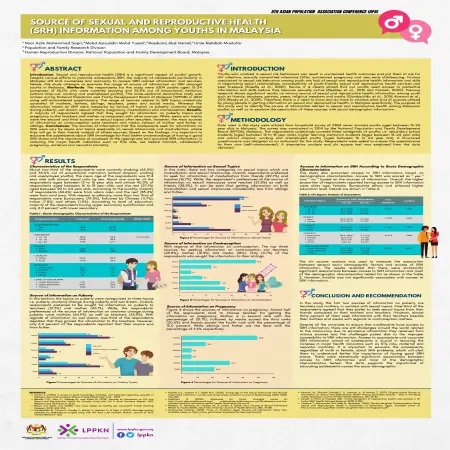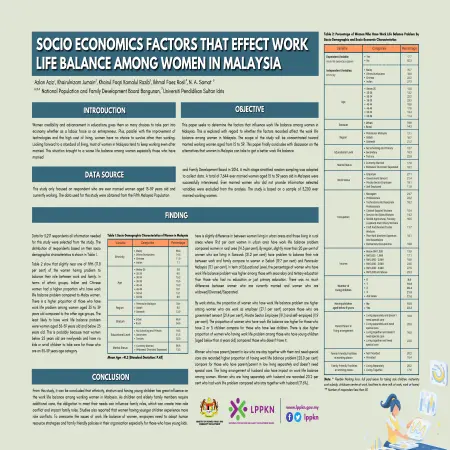Browse by Author
|
|
Suara Keluarga, Masa Depan Negara: Kajian Penduduk dan Keluarga Malaysia Keenam (KPKM-6) 2024
Item Type: Video
Editor:
Year: 00/07/2024
Abstract: The Sixth Malaysian Population and Family Survey (MPFS-6) 2024 is the sixth study in a series of surveys conducted by the National Population and Family Development Board (NPFDB) since 1974. This study aims to provide up-to-date information and time-series data related to population, family, and reproductive health of the Malaysian population.
|
|
|
|
|
|
SDGS and the impact of megatrends on Families: perspectives from Malaysia
Item Type: Conference or Workshop Item
Editor:
Year: 00/05/2024
Abstract: 57th Commissions on Population and Development (CPD57): Assessing the status of implementation of the Programmed of Action of the International Conference on Population and Development and its contribution to the follow-up and review of the 2030 Agenda for Sustainable Development during the decade of action and delivery for sustainable development. Strengthening Malaysian Families in era of megatrends, National Population and Family Development Board Malaysia (NPFBD) had LPPKN Family Centre, Nur Sejahtera Clinic Services, Population and Family Research, Training and education (family), Counseling service and program, online accessibility etc.
|
|
|
|
|
|
Stress dan tahap kesejahteraan sosial pasca pandemik covid19: Satu tinjauan
Item Type: Book Section
Editor:
Year: 01/12/2022
Abstract: Since the start of the Coronavirus Disease 19 (COVID-19) pandemic in late 2019, the highest daily deaths recorded in Malaysia were 408 and until the end of the pandemic period, on 30 March 2022, the cumulative death toll was over 35,800 deaths. Throughout the pandemic phase, every Malaysian individual of all ages, races and economic social backgrounds received the impact of the phased implementation of the Phased Movement Control Order policy implemented by the government. This paper aims to identify the factors that influence the level of stress of parents during the post COVID-19 pandemic in Malaysia.
|
|
|
|
|
|
Socio demographics determinants of contraceptive use among women in Malaysia: logistic regression model
Item Type: Book Section
Editor:
Year: 00/06/2022
Abstract: Family planning could be defined as the ability of individuals and couples to anticipate and achieve their births. There are many types of contraceptive methods that can be used in family planning that could divided into two categories; namely modern and non-modern contraceptives methods. The choice whether to use modern or non-modern methods is said to be related to the socio demographic determinants of contraceptive use among ever married women aged 15-49 in Malaysia. Data used in this study was obtained from a national survey called Fifth Malaysia Population and Family Survey (MPFS-5) which was conducted by the National Population and Family Development Board in 2014. Multi-stage stratified random sampling method was used across all states in Malaysia. A total of 2736 ever married women who use contraception aged 15-49 years old were subjected to a face-to-face interview. The information was obtained on socio demographic characteristics and family planning practise. Data was analysed by using descriptive analysis, Chi-Square analysis and binary logistic regression. Findings of the analysis revealed that amongst five socio-demographic characteristics under study which are stratum, ethnicity, education level, age and income, only three socio-demographic characteristics known as stratum, ethnicity and education level present a significant association to the modern and non-modern contraceptive use among ever married women in Malaysia. In conclusion, the stratum or the location which either from urban or rural areas, the ethnicity which either Malay, other Bumiputera, Chinese or Indian, and the education level which either no education, primary school, secondary school or tertiary school, are the determinants of modern and non-modern contraceptive use among ever married women aged 15-49 in Malaysia
|
|
|
|
|
|
Statistik data perkhidmatan perancang keluarga LPPKN tahun 2015-2019
Item Type: Report
Editor:
Year: 00/00/2022
Abstract: National Population and Family Development Board Malaysia (NPFDB) have prepared a statistic report on family planning services at the NPFDB level according to the number of new recipients, type of contraceptive, state, age group, ethnicity, strata and employment status for 2015 to 2019. This report only consist new recipients, which is new clients who have not registered with any of family planning agency such as NPFDB, Ministry of Health (MOH), Malaysian Armed Forces (ATM) and Federation of Reproductive Health Associations Malaysia (FRHAM). The breakdown of statistic report by type of contraceptive have included implant, injection, condom, pill, intrauterine device and non-modern methods. Meanwhile, the breakdown of family planning data by age have covered the range of 15 years to 49 years. The breakdown of data by ethnicity also have included Malay, Chinese, Indian, other bumiputera and other ethnicities. These statistic data were also have provided by strata (urban and rural), employment status (employed and unemployed) and education breakdown including college/ university, secondary school, primary school and non formal education.
|
|
|
|
|
|
Spirituality in parenting
Item Type: Article
Editor:
Year: 01/10/2021
Abstract: The emergence of COVID-19 since last year has cause an unprecendented health crisis across the globe, affecting people physically, mentally, financially and socially. To alleviate the difficulties and stresses in dealing with the pandemic and ensuing lockdowns, multiple approaches have been taken by the governments, institutions and individuals. Spirituality plays a major role in helping some families cope during this extraordinary period. It can serve as an empowering foundation to any collective, the family unit being the most basic example. Indeed, spirituality is an integral component in parenting that should not be overlooked even during normal times.
|
|
|
|
|
|
Source of sexual and reproductive health (SRH) information among youths in Malaysia
Item Type: Scientific Poster
Editor:
Year: 00/00/2021
Abstract: A majority of respondents agreed that they sought for information on puberty topics and pregnancy to the teachers and mother as compared with other sources. While, peers and media were the second and third sources on sexual topics after teachers. However, the main sources of information on contraception were teachers and media instead of mother and father or siblings.
|
|
|
|
|
|
Socio economics factors that effect work life balance among women in Malaysia
Item Type: Scientific Poster
Editor:
Year: 00/00/2021
Abstract: This paper seeks to determine the factors that influence work life balance among women in Malaysia. This is explored with regard to whether the factors recorded affect the work life balance among women in Malaysia. The scope of the study will be concentrated toward married working women aged from 15 to 59. This paper finally concludes with discussion on the alternatives that women in Malaysia can take to get a better work life balance.
|
|
|
|
|
|
Subjective well-being of the Malaysian citizen: preliminary development of survey instrument
Item Type: Article
Editor:
Year: 00/03/2020
Abstract: A questionnaire is a well-known measurement instrument used by most of the researchers when conducting a survey. It is a powerful tool for collecting data in survey research. It should be noted that the quality of a measurement instrument used plays a key role in ensuring the quality of data gained in the survey. Therefore, it has become essential for the researchers to carefully design their questionnaire so that the quality of the data obtained can be preserved. Then, it is also vital for the researchers to assess the quality of the data obtained before it can be successfully used for further analysis. This article discussed an early process involved in development of the survey instrument for the purpose of assessing subjective well-being of the Malaysian citizen. These include operationalization of definition, identification of the important dimension and indicators of subjective well-being, rating scale and content validity of the items with the experts.
|
|
|
|







